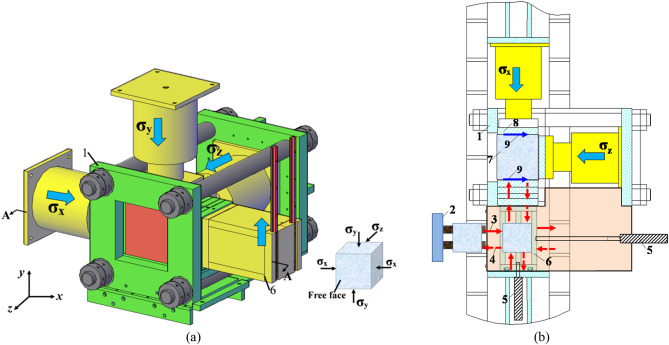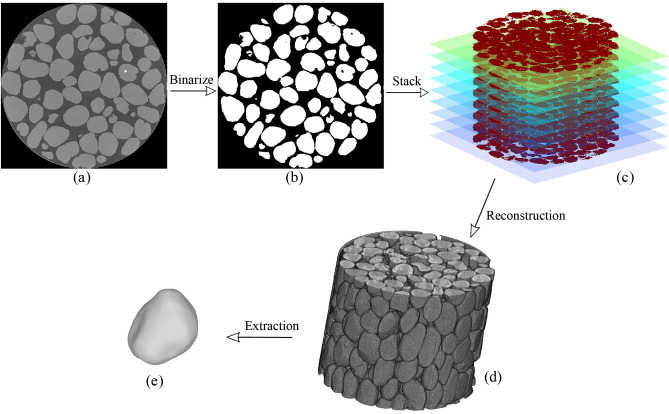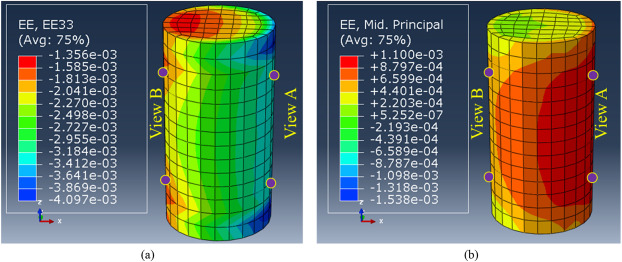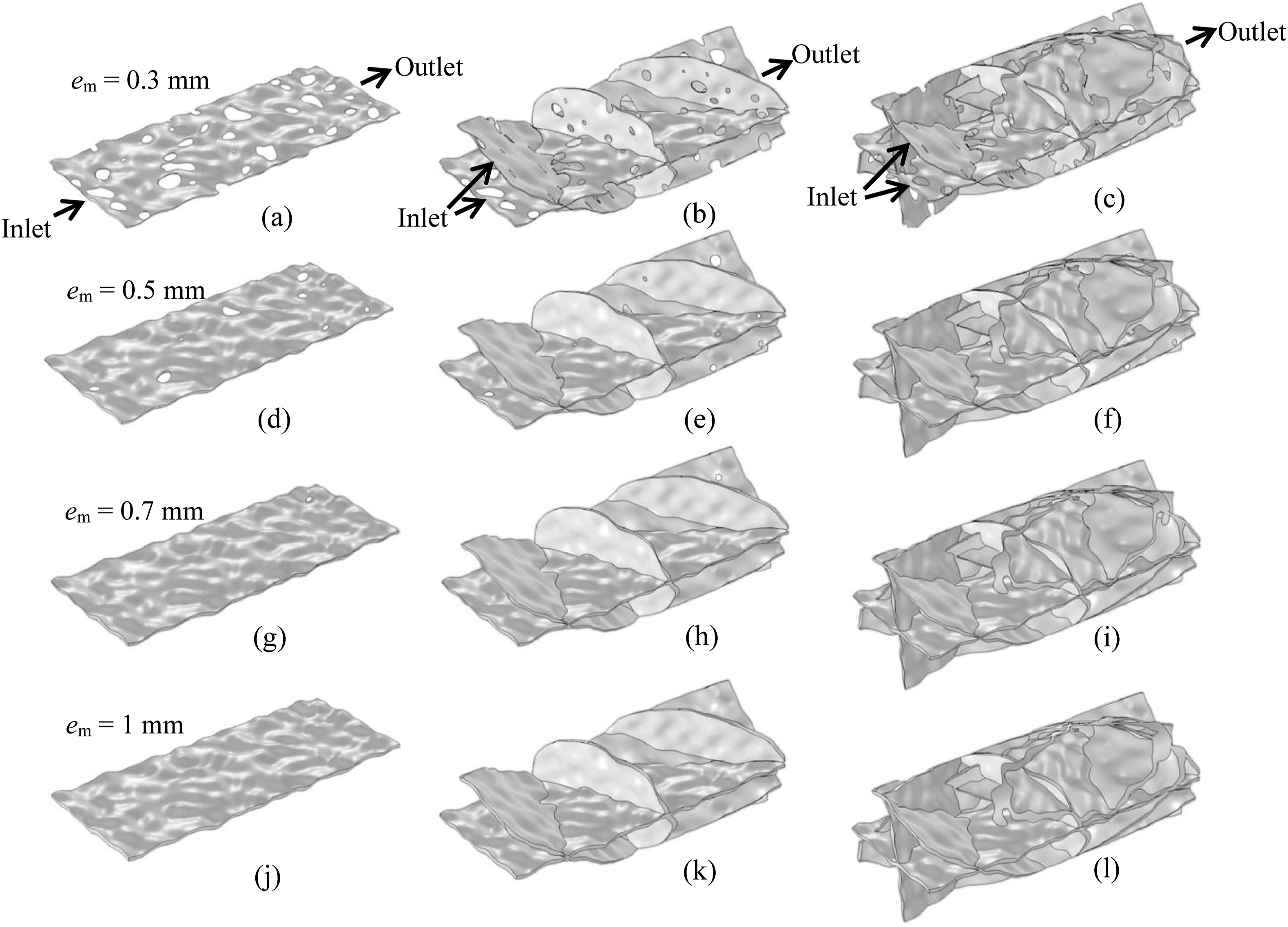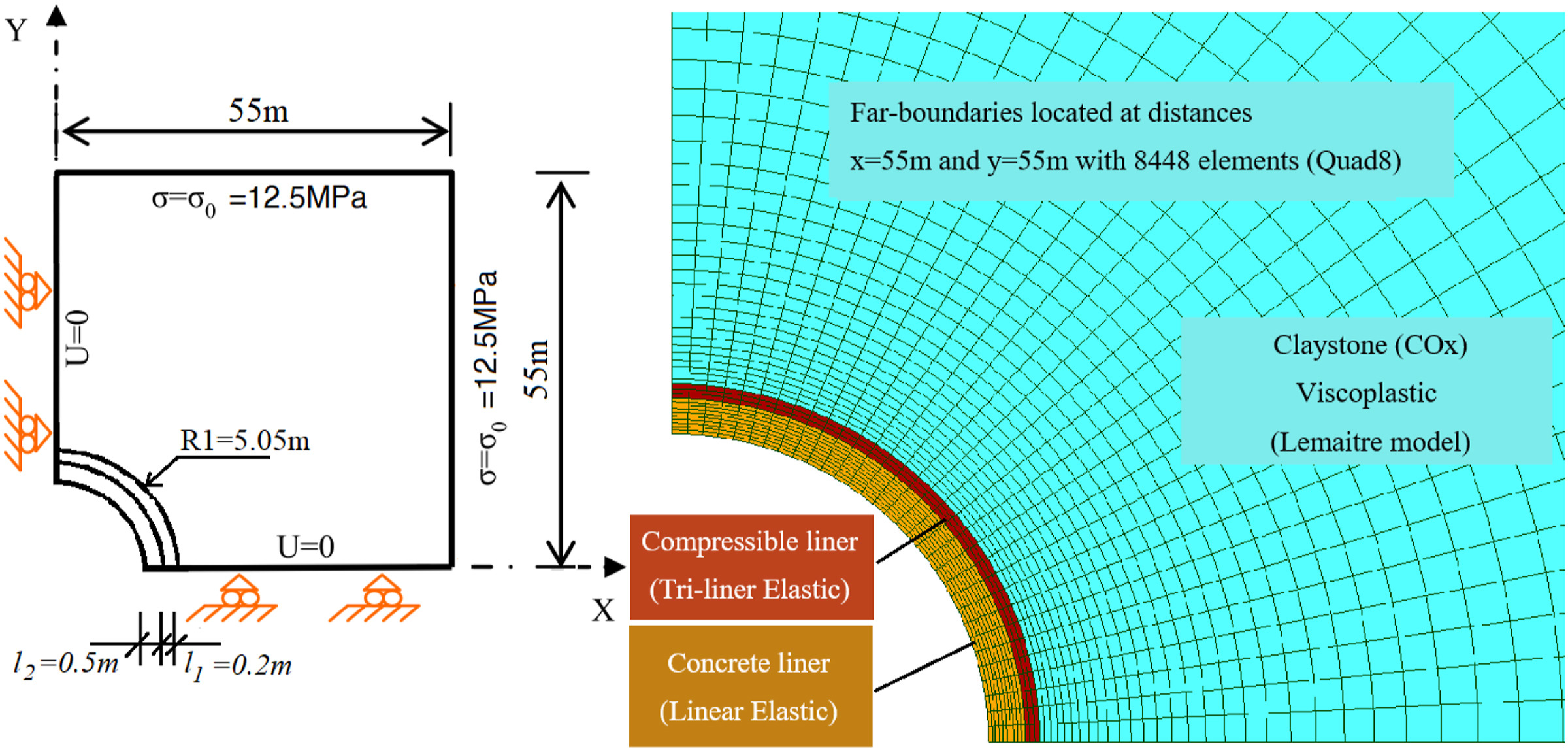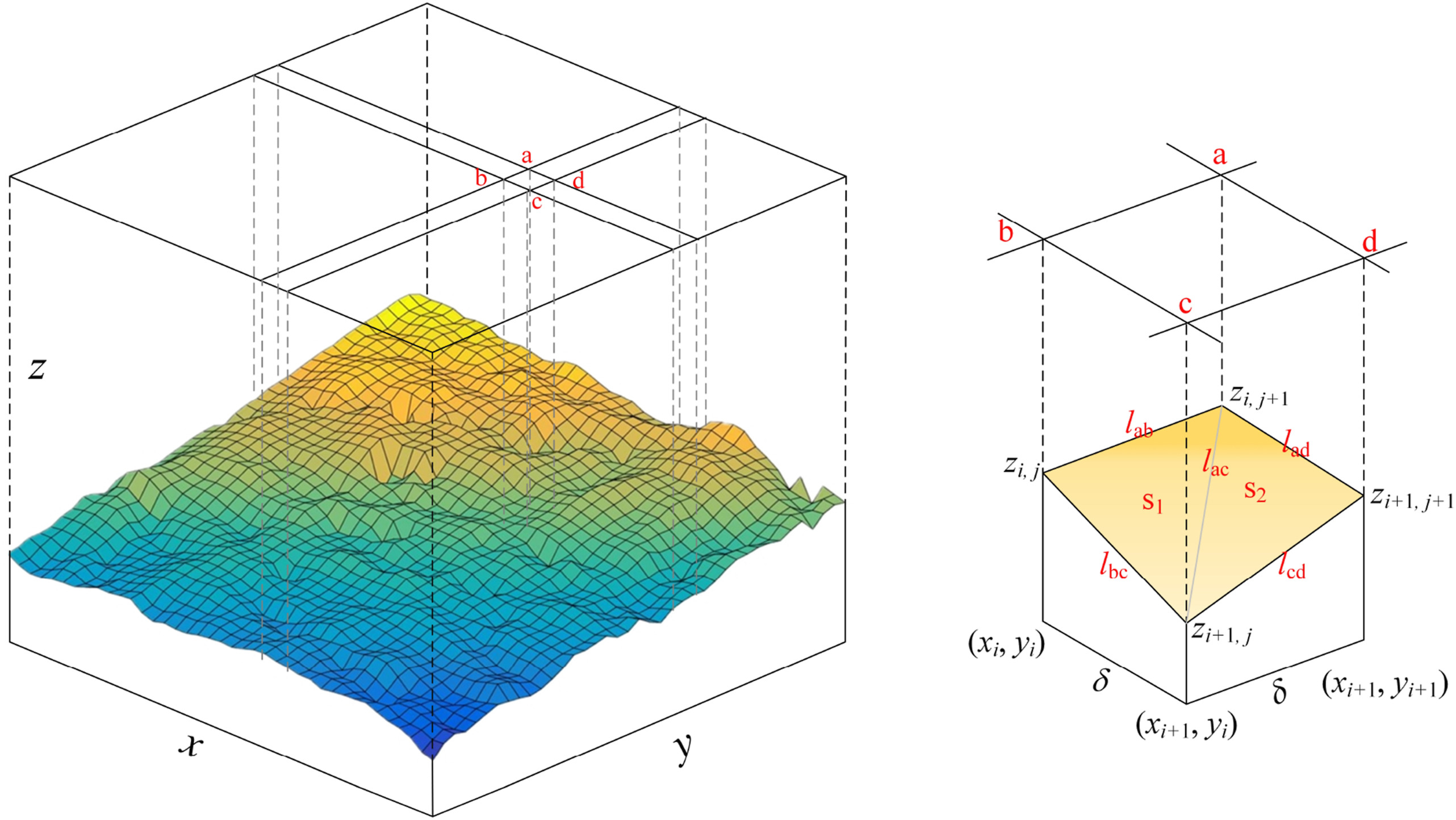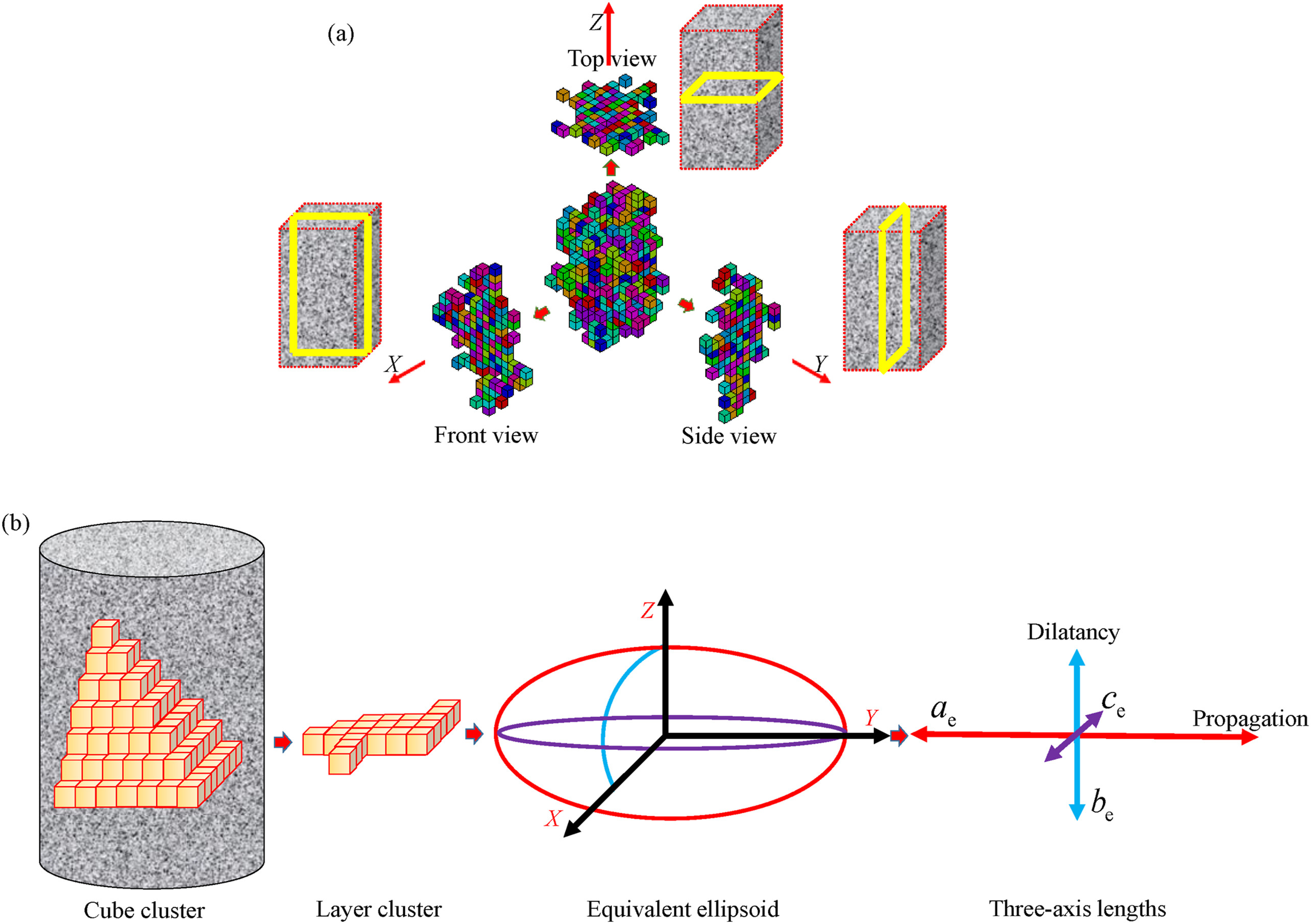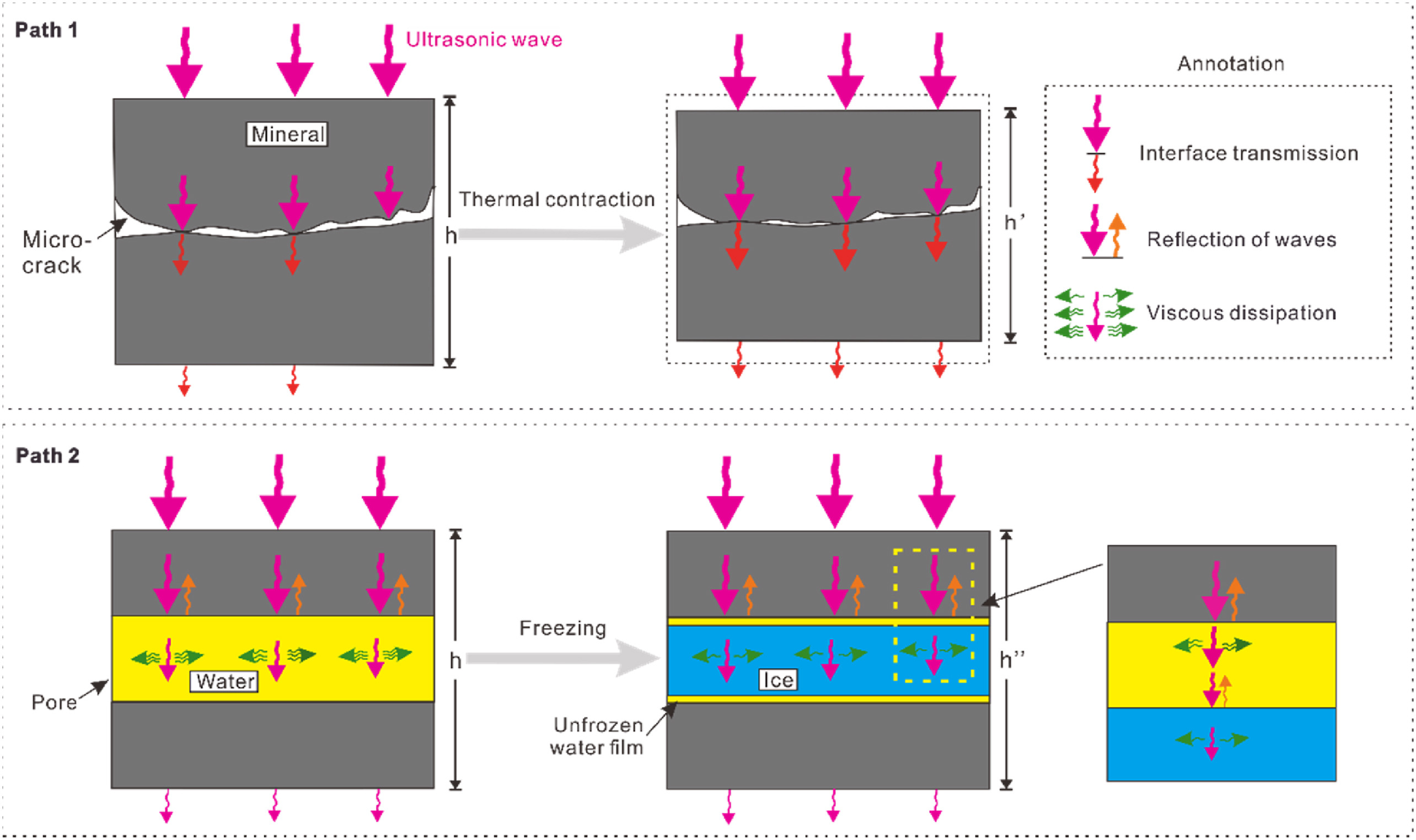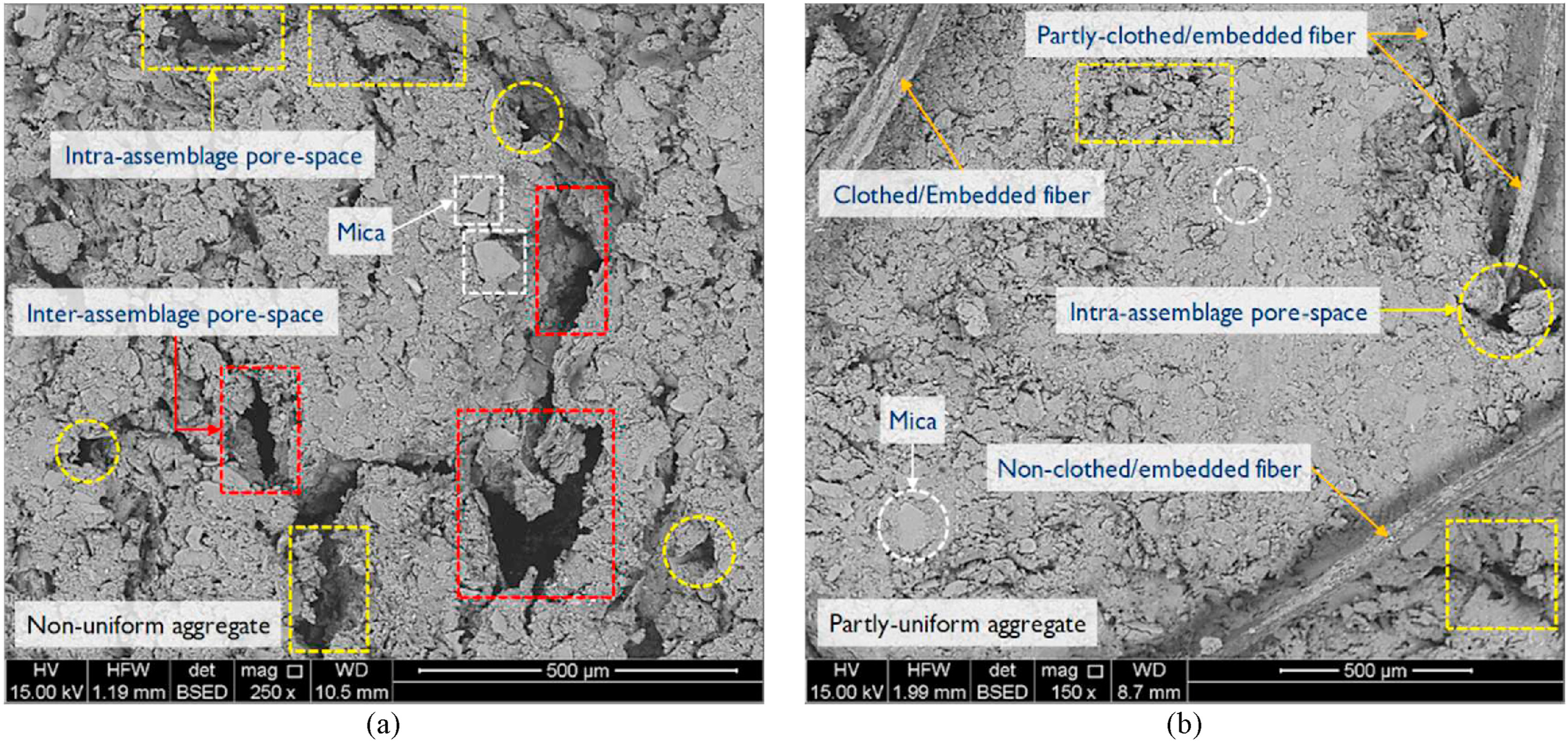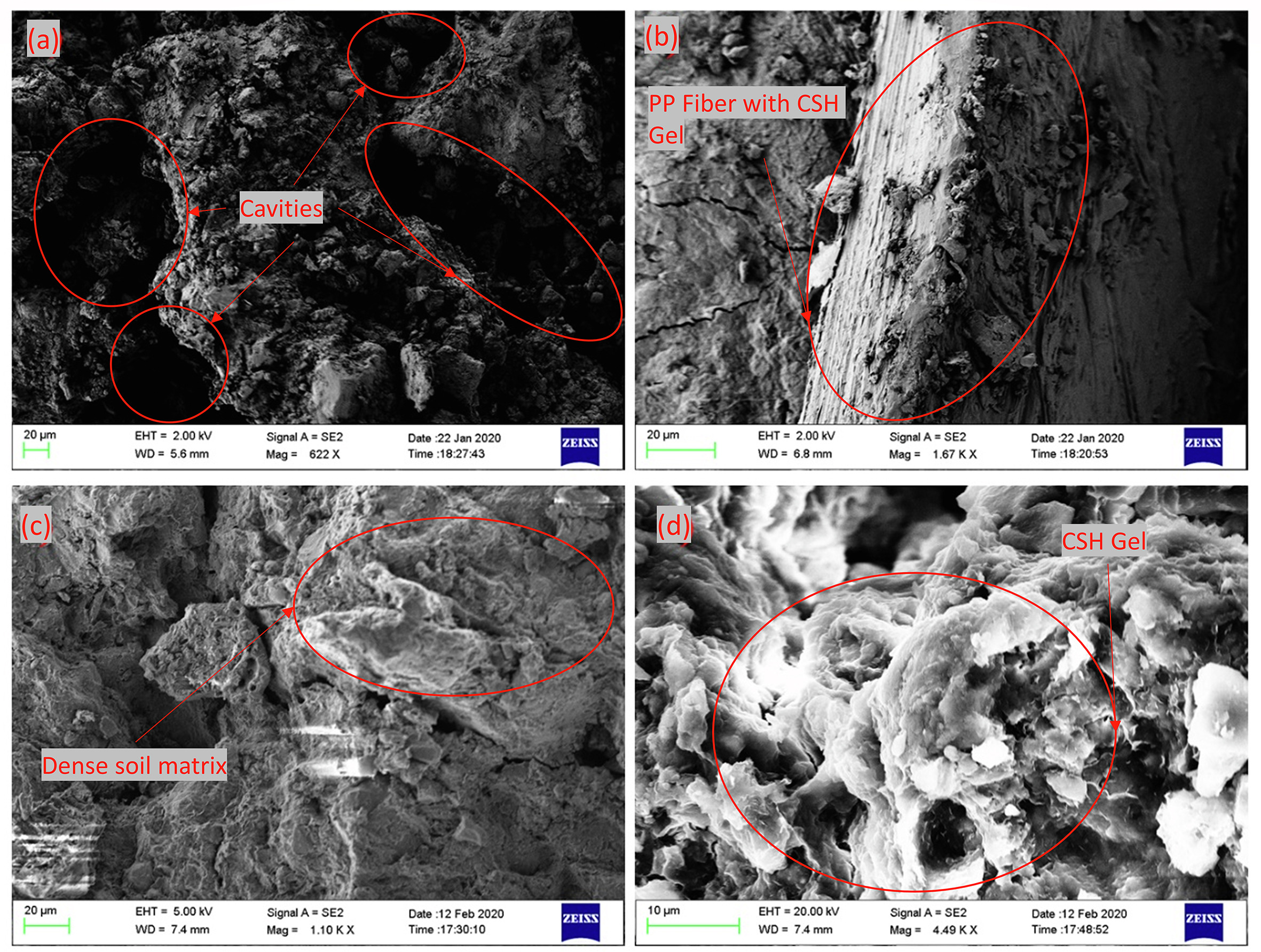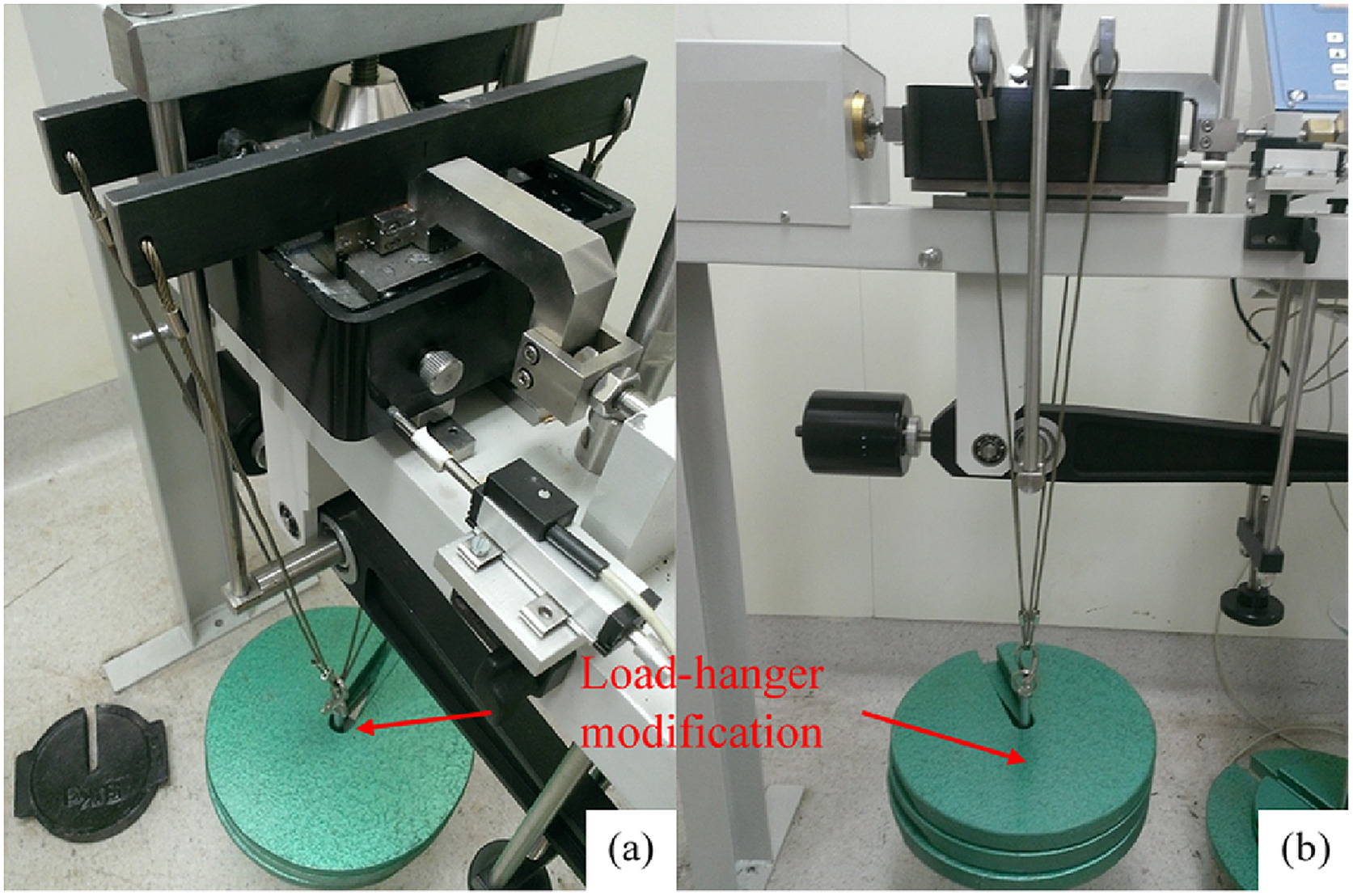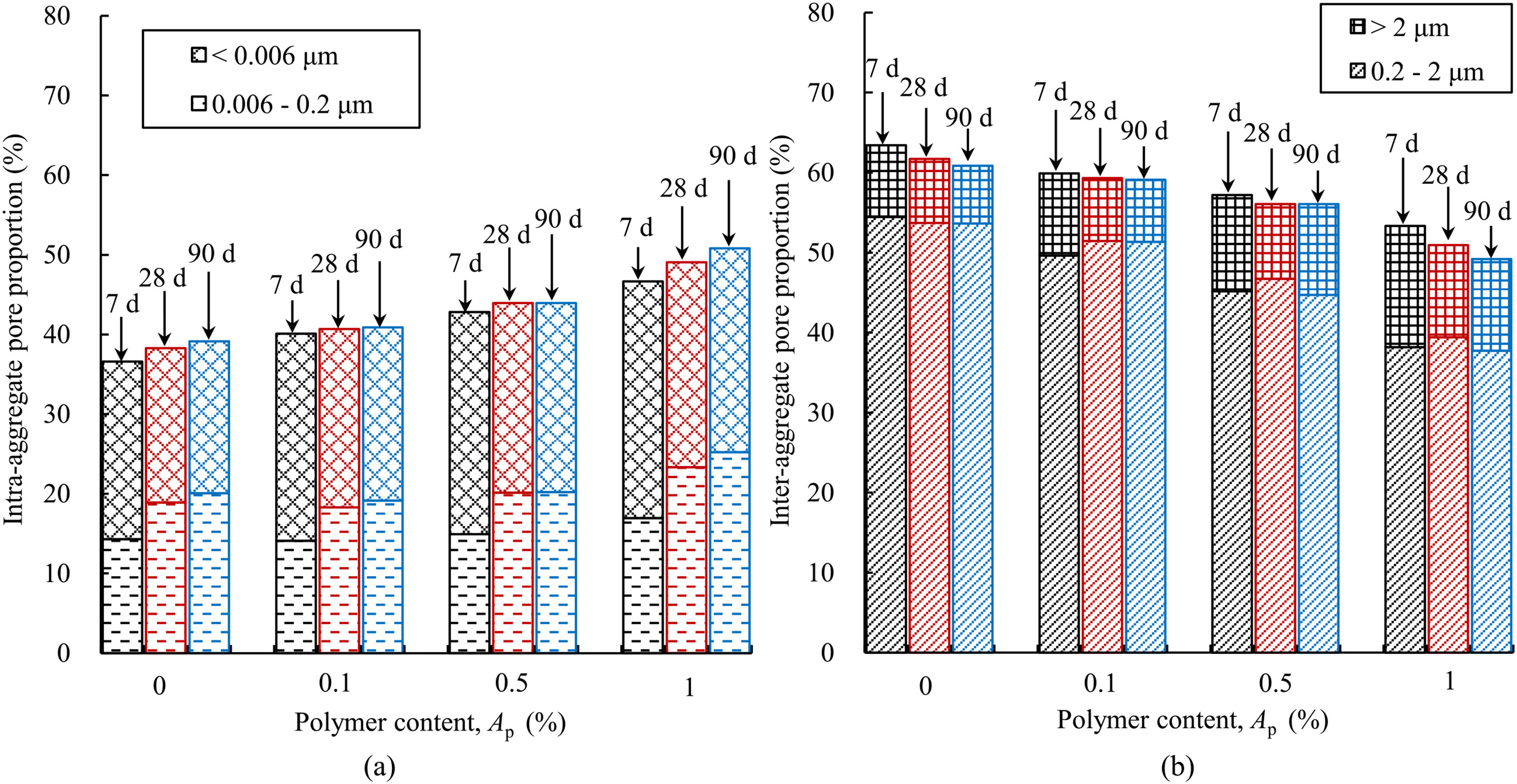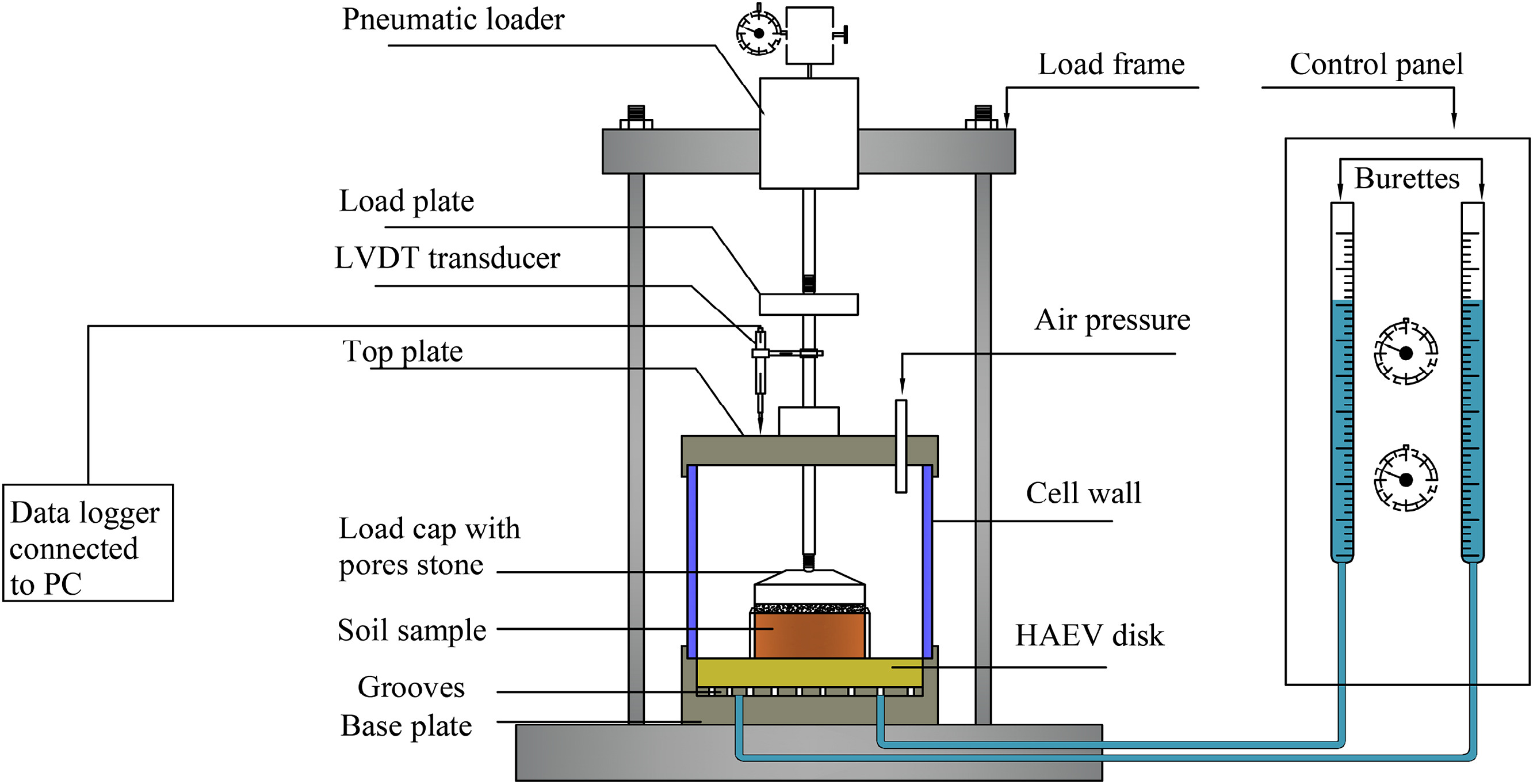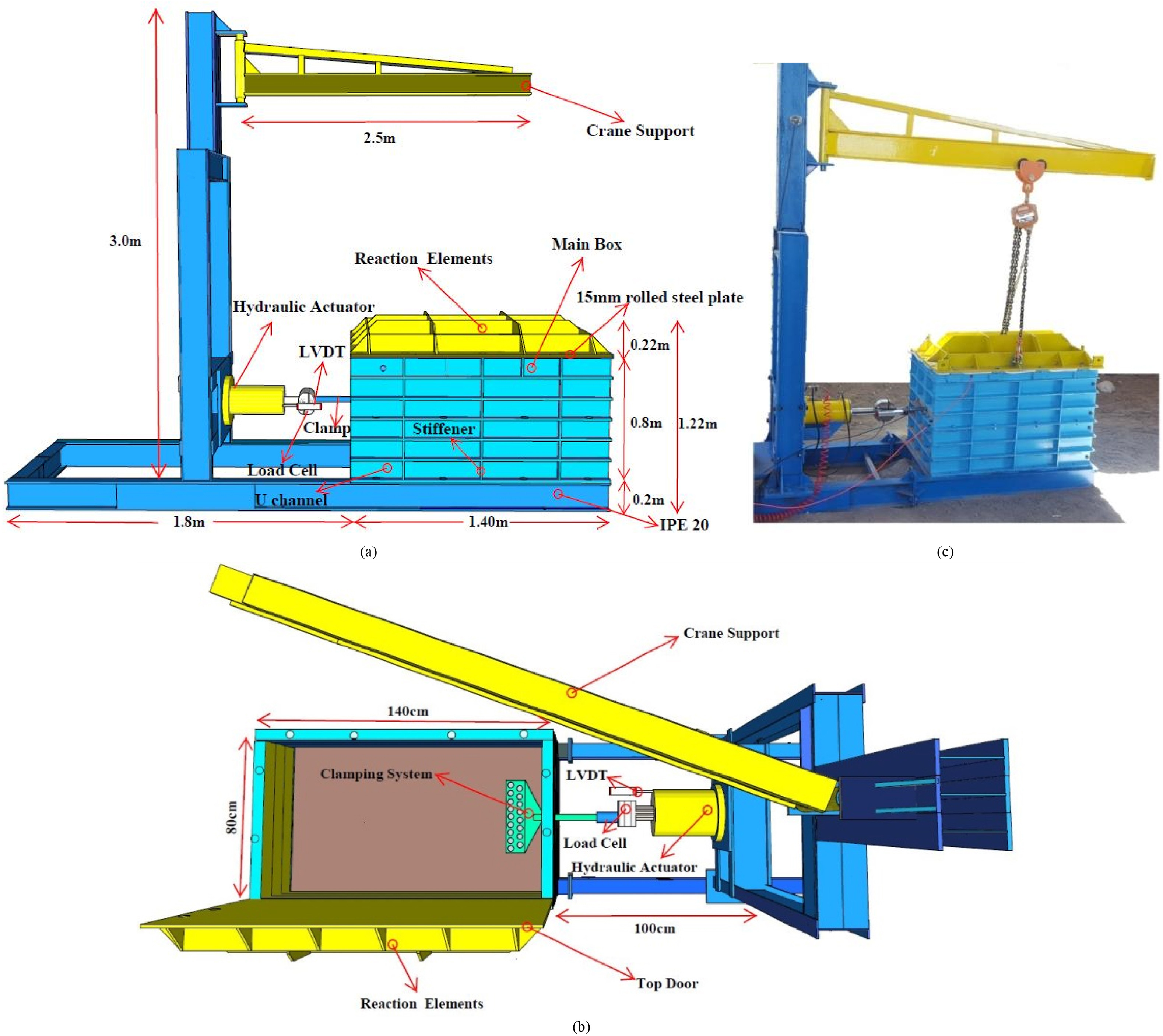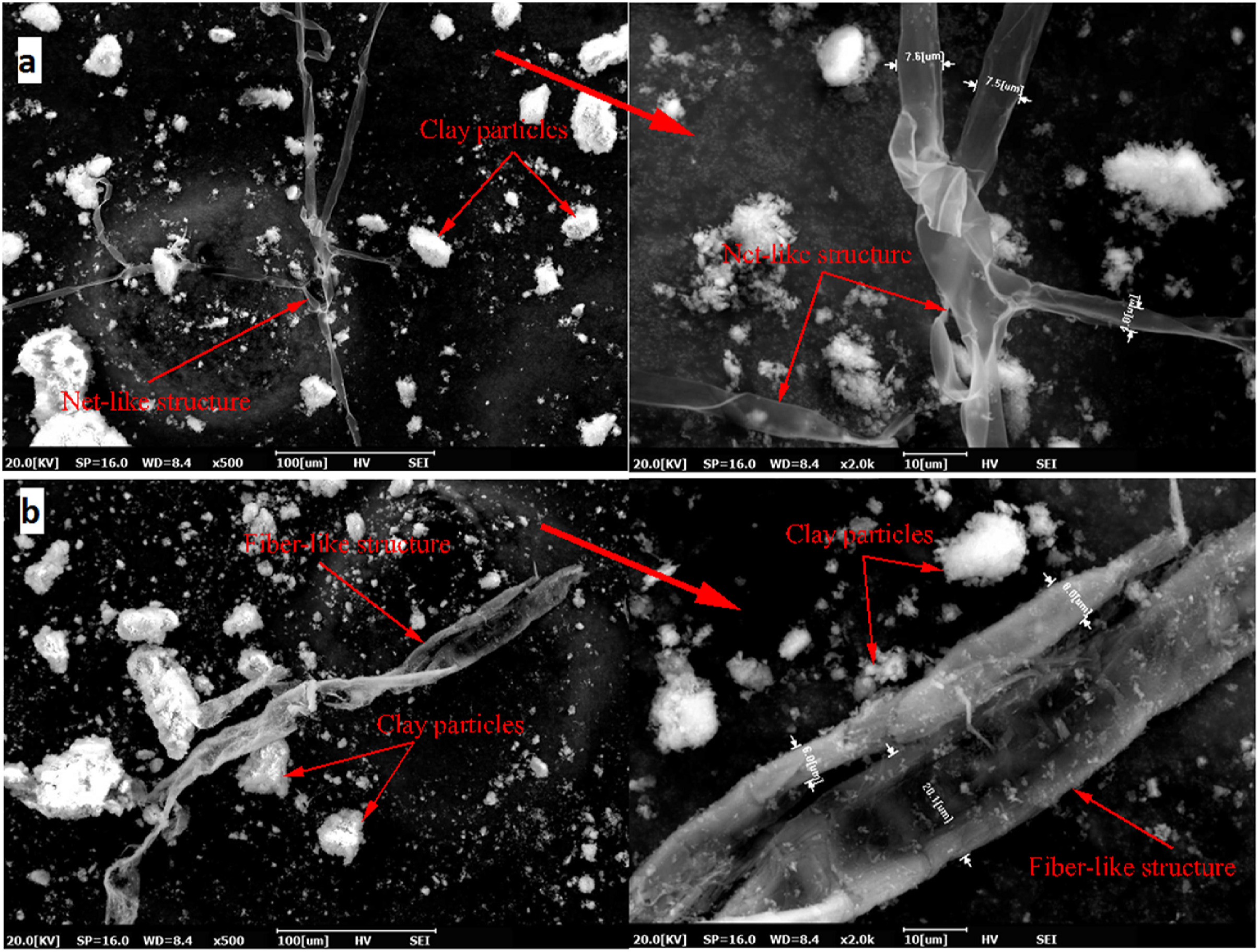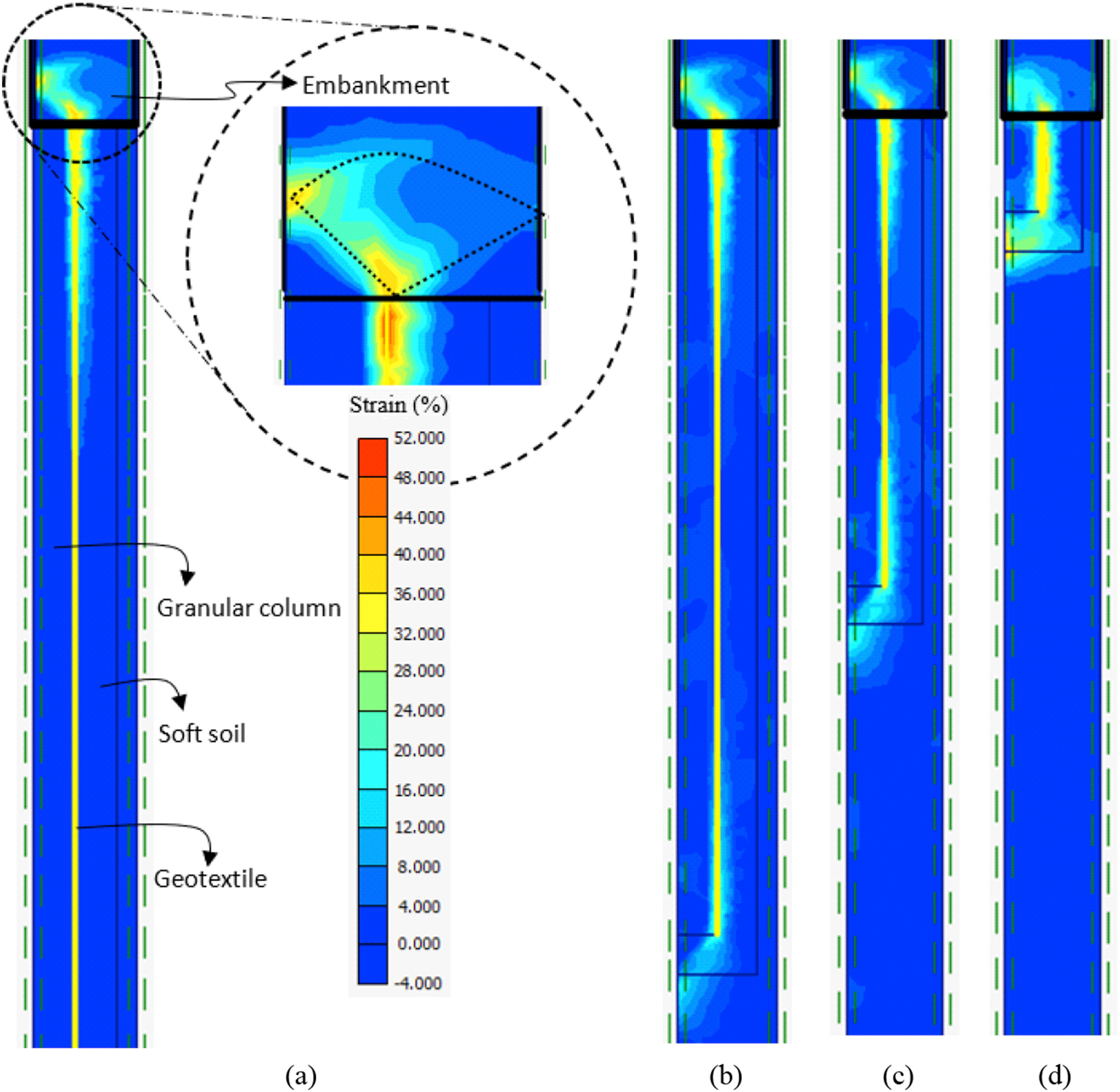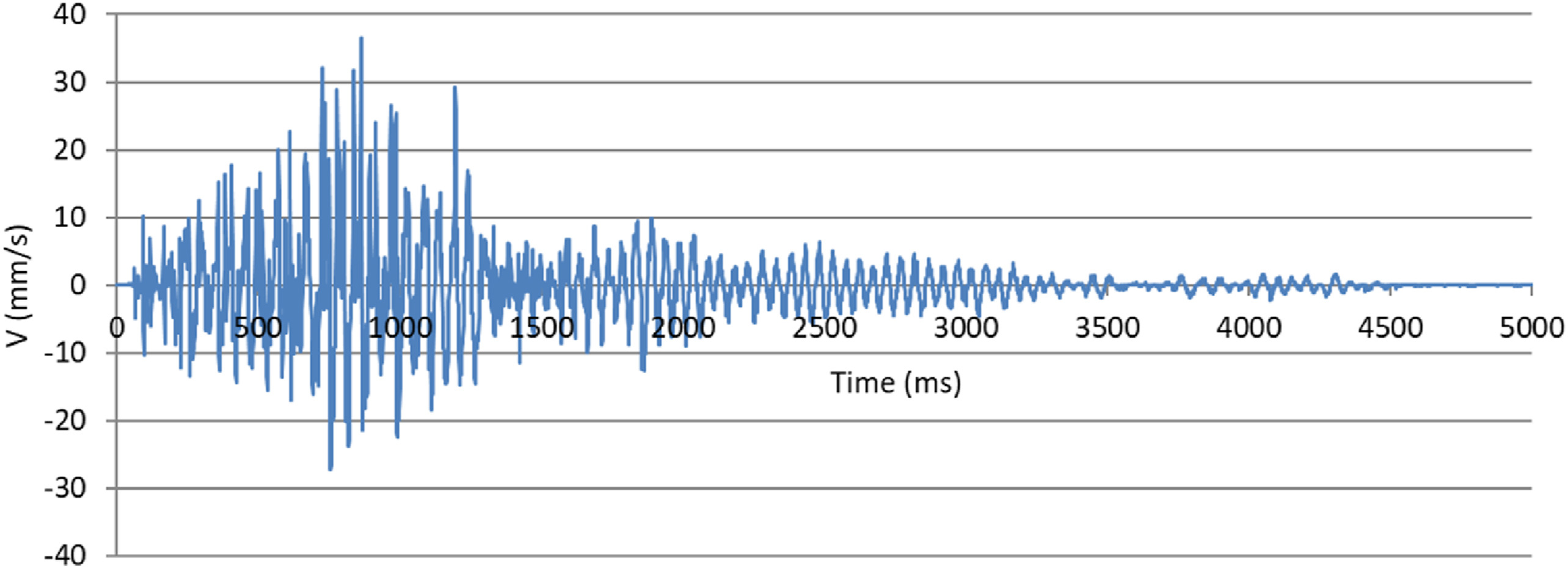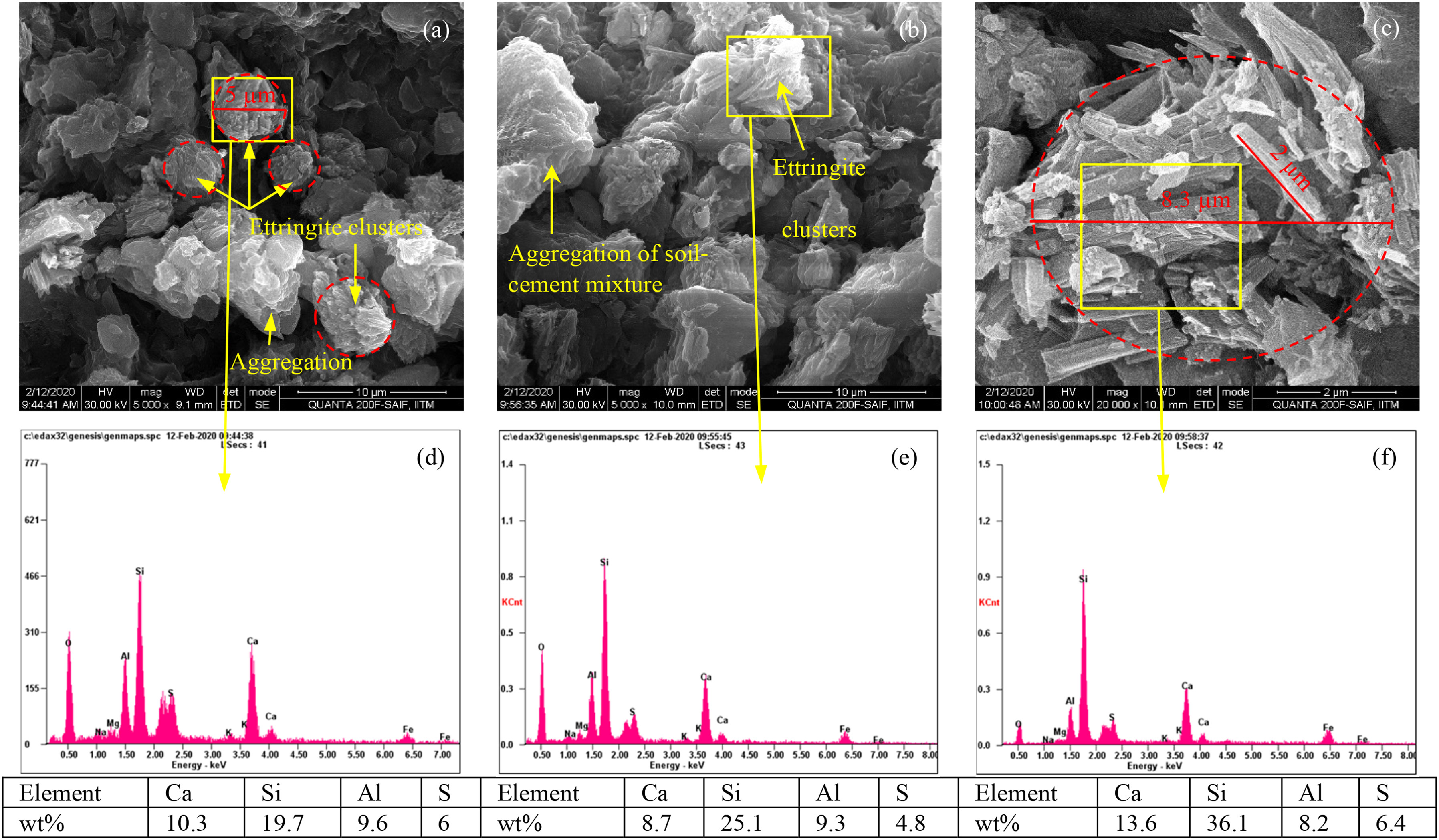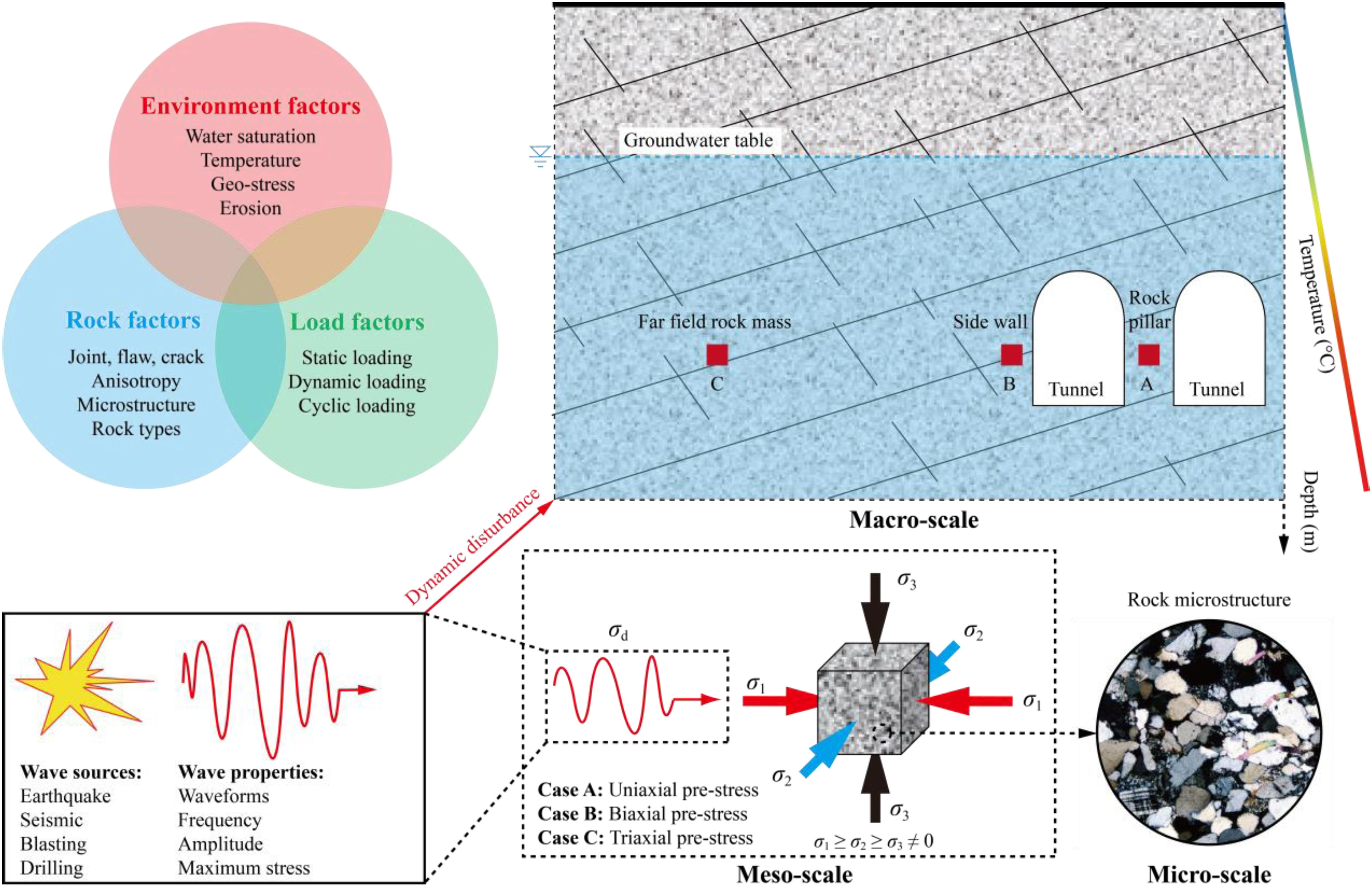-
Geomechanical properties will constrain CO2 injection into the lower Ordovician Rose Run sandstone deep saline reservoir, Appalachian Basin, Kentucky, USA
John Richard Bowersox, Stephen F. Greb, Junfeng Zhu, David C. Harris
2021, 13(5): 947-960. doi:10.1016/j.jrmge.2021.04.010
Abstract: The Kentucky Geological Survey (KGS) 1 Hanson Aggregates stratigraphic research well, Carter County, Kentucky, USA, was drilled to a total depth of 1474 m as a field-scale test of potential CO2 storage reservoir properties in the Central Appalachian Basin. Geomechanical properties of the Rose Run sandstone (upper Ordovician Knox group) were tested for its suitability as a storage reservoir. A 9.8-m thick section of tShow FiguresThe Kentucky Geological Survey (KGS) 1 Hanson Aggregates stratigraphic research well, Carter County, Kentucky, USA, was drilled to a total depth of 1474 m as a field-scale test of potential CO2 storage reservoir properties in the Central Appalachian Basin. Geomechanical properties of the Rose Run sandstone (upper Ordovician Knox group) were tested for its suitability as a storage reservoir. A 9.8-m thick section of the Rose Run was penetrated at 1000 m drilled depth and a whole-diameter core and rotary sidewall cores were taken. Average porosity and permeability measured in core plugs were 9.1% and 44.6 mD, respectively. Maximum vertical stress gradient calculated in the wellbore was 26 MPa/km. Wellbore fractures in dolomites underlying and overlying the Rose Run follow the contemporary N53°E Appalachian Basin stress field. The Rose Run elastic geomechanical properties were calibrated to values measured in core plugs to evaluate its fracturing risk as a CO2 storage reservoir. Mean Young's modulus and Poisson's ratio values of the Rose Run were 45 GPa and 0.23, respectively, whereas Young's modulus and Poisson's ratio values were 77.1 GPa and 0.28, respectively, in the overlying Beekmantown dolomite, suggesting the Rose Run may fracture if overpressured during CO2 injection but be confined by the Beekmantown. Triaxial compressive strength measured in core plugs found the Rose Run and Beekmantown fractured at mean axial stresses of 156.5 MPa and 282.2 MPa, respectively, confirming the Beekmantown as suitable for confining CO2 injected into the Rose Run. A step-rate test was conducted in a mechanically-isolated 18.6-m interval bracketing the Rose Run. Static Rose Run reservoir pressure was 9.3 MPa, and fracture gradient under injection was 13.6 MPa/km, suggesting step-rate testing before CO2 injection, and subsequent pressure monitoring to ensure confinement. As the region around the KGS 1 Hanson Aggregates well is underpressured and adjacent to faulted Precambrian basement, further research is needed to evaluate its induced seismicity risk during CO2 injection.
[...]Read more. -
A novel true triaxial test system for microwave-induced fracturing of hard rocks
Xia-Ting Feng, Jiuyu Zhang, Chengxiang Yang, Jun Tian, Feng Lin, Shiping Li, Xiangxin Su
2021, 13(5): 961-971. doi:10.1016/j.jrmge.2021.03.008
Abstract: This study introduces a test system for microwave-induced fracturing of hard rocks under true triaxial stress. The test system comprises a true triaxial stress loading system, an open-ended microwave-induced fracturing system, a data acquisition system, an acoustic emission (AE) monitoring system, and an auxiliary specimen loading system. Microwave-induced surface and borehole fracturing tests under true triaxial strShow FiguresThis study introduces a test system for microwave-induced fracturing of hard rocks under true triaxial stress. The test system comprises a true triaxial stress loading system, an open-ended microwave-induced fracturing system, a data acquisition system, an acoustic emission (AE) monitoring system, and an auxiliary specimen loading system. Microwave-induced surface and borehole fracturing tests under true triaxial stress were fulfilled for the first time, which overcomes the problem of microwave leakage in the coupling loading of true triaxial stress and microwave. By developing the dynamic monitoring system, the thermal response and fracture evolution were obtained during microwave irradiation. The monitoring system includes the infrared thermometry technique for monitoring rock surface temperature, the distributed optic fiber sensing technique for monitoring temperature in borehole in rock, the AE technique and two-dimensional digital speckle correlation technique for monitoring the evolution of thermal damage and the rock fracturing process. To validate the advantages of the test system and investigate the characteristics of microwave-induced fracturing of hard rocks, the study demonstrates the experimental methods and results for microwave-induced surface and borehole fracturing under true triaxial stress. The results show that thermal cracking presented intermittent characteristics (calm–active–calm) during microwave-induced surface and borehole fracturing of basalt. In addition, true triaxial stress can inhibit the development and distribution of thermal cracks during microwave-induced surface fracturing. When microwave-induced borehole fracturing occurs, it promotes the distribution of thermal cracks in rock, but inhibits the width of cracks. The results also prove the reliability of the test system.
[...]Read more. -
Isotropic compression behavior of granular assembly with non-spherical particles by X-ray micro-computed tomography and discrete element modeling
Nan Zhang, Ahmadreza Hedayat, Shaoyang Han, Runlin Yang, Héctor Gelber Bolaños Sosa, Juan José González Cárdenas, Guido Edgard Salas álvarez
2021, 13(5): 972-984. doi:10.1016/j.jrmge.2021.04.005
Abstract: The particle morphological properties, such as sphericity, concavity and convexity, of a granular assembly significantly affect its macroscopic and microscopic compressive behaviors under isotropic loading condition. However, limited studies on investigating the microscopic behavior of the granular assembly with real particle shapes under isotropic compression were reported. In this study, X-ray computed tomography (Show FiguresThe particle morphological properties, such as sphericity, concavity and convexity, of a granular assembly significantly affect its macroscopic and microscopic compressive behaviors under isotropic loading condition. However, limited studies on investigating the microscopic behavior of the granular assembly with real particle shapes under isotropic compression were reported. In this study, X-ray computed tomography (μCT) and discrete element modeling (DEM) were utilized to investigate isotropic compression behavior of the granular assembly with regard to the particle morphological properties, such as particle sphericity, concavity and interparticle frictions. The μCT was first used to extract the particle morphological parameters and then the DEM was utilized to numerically investigate the influences of the particle morphological properties on the isotropic compression behavior. The image reconstruction from μCT images indicated that the presented particle quantification algorithm was robust, and the presented microscopic analysis via the DEM simulation demonstrated that the particle surface concavity significantly affected the isotropic compression behavior. The observations of the particle connectivity and local void ratio distribution also provided insights into the granular assembly under isotropic compression. Results found that the particle concavity and interparticle friction influenced the most of the isotropic compression behavior of the granular assemblies.
[...]Read more. -
Sources of variability in laboratory rock test results
Rashid Geranmayeh Vaneghi, Seyed Erfan Saberhosseini, Arcady V. Dyskin, Klaus Thoeni, Mostafa Sharifzadeh, Mohammad Sarmadivaleh
2021, 13(5): 985-1001. doi:10.1016/j.jrmge.2021.03.007
Abstract: Appropriate rock characterization is beneficial in providing a reliable judgment on rock properties which is crucial for the design process of rock engineering applications. However, it can be difficult to obtain consistent mechanical parameters due to substantial variations in rock properties. In this research, uniaxial compression tests on dolerite specimens collected from a gold mine in Western Australia showed suShow FiguresAppropriate rock characterization is beneficial in providing a reliable judgment on rock properties which is crucial for the design process of rock engineering applications. However, it can be difficult to obtain consistent mechanical parameters due to substantial variations in rock properties. In this research, uniaxial compression tests on dolerite specimens collected from a gold mine in Western Australia showed substantial scatter in the results. Rock categorization based on the P-wave velocities is as accurate as the thin section analysis, which suggests that they can be used together to gain a more accurate initial understanding of the rock types before any laboratory testing. The quality of specimen preparation and rock–machine interaction greatly affect the test results. For instance, non-parallelness of loading platens can lead to considerable scatter of the testing results, which would be perceived as rock variability. It is suggested that the current testing standards should be modified towards a better control of the loading machine performance and equipment precision. Finally, the possibility of pre-existing microcracks in rock, neither detected by the thin section analysis nor by the ultrasonic measurement, must be examined by computed tomography (CT) scanning as they can affect the test results. This study will enhance our knowledge about the sources of variability in laboratory test results of rock which is essential for obtaining reliable data.
[...]Read more. -
Rock damage and fracturing induced by high static stress and slightly dynamic disturbance with acoustic emission and digital image correlation techniques
Shuting Miao, Pengzhi Pan, Petr Konicek, Peiyang Yu, Kunlun Liu
2021, 13(5): 1002-1019. doi:10.1016/j.jrmge.2021.05.001
Abstract: A series of coupled static-dynamic loading tests is carried out in this study to understand the effect of slightly dynamic disturbance on the rocks under high static stress. The acoustic emission (AE) and digital image correlation (DIC) techniques are combined to quantitatively characterize the damage and fracturing behaviors of rocks. The effects of three influencing factors, i.e. initial static stress, disturbanceShow FiguresA series of coupled static-dynamic loading tests is carried out in this study to understand the effect of slightly dynamic disturbance on the rocks under high static stress. The acoustic emission (AE) and digital image correlation (DIC) techniques are combined to quantitatively characterize the damage and fracturing behaviors of rocks. The effects of three influencing factors, i.e. initial static stress, disturbance amplitude, and disturbance frequency, on the damage and fracturing evolution are analyzed. The experimental results reveal the great differences in AE characteristics and fracturing behaviors of rocks under static loads and coupled static-dynamic loads. Both the Kaiser effect and Felicity effect are observed during the disturbance loading process. The crack initiation, stable and unstable propagation in the highly-stressed rocks can be triggered by cyclic disturbance loads, and more local tensile splitting cracks are found in the rocks subjected to coupled static-dynamic loads. The damage and fracturing evolution of rocks during cyclic disturbances can be divided into two stages, i.e. steady and accelerated stages, and the increase rate and proportion of each stage are greatly affected by these influencing factors. High initial static stress, low disturbance frequency, and high disturbance amplitude are considered to be adverse factors to the stability of the rocks, which would induce a high increase rate of the steady stage and a high proportion of the accelerated stage within the whole disturbance period. Based on the two-stage damage evolution trend, a linear-exponential damage model is employed to predict the instability of the rocks under coupled static-dynamic loads.
[...]Read more. -
Nonlinear fluid flow through three-dimensional rough fracture networks: Insights from 3D-printing, CT-scanning, and high-resolution numerical simulations
Bo Li, Jiafei Wang, Richeng Liu, Yujing Jiang
2021, 13(5): 1020-1032. doi:10.1016/j.jrmge.2021.04.007
Abstract: Nonlinear flow behavior of fluids through three-dimensional (3D) discrete fracture networks (DFNs) considering effects of fracture number, surface roughness and fracture aperture was experimentally and numerically investigated. Three physical models of DFNs were 3D-printed and then computed tomography (CT)-scanned to obtain the specific geometry of fractures. The validity of numerically simulating the fluid flow throShow FiguresNonlinear flow behavior of fluids through three-dimensional (3D) discrete fracture networks (DFNs) considering effects of fracture number, surface roughness and fracture aperture was experimentally and numerically investigated. Three physical models of DFNs were 3D-printed and then computed tomography (CT)-scanned to obtain the specific geometry of fractures. The validity of numerically simulating the fluid flow through DFNs was verified via comparison with flow tests on the 3D-printed models. A parametric study was then implemented to establish quantitative relations between the coefficients/parameters in Forchheimer's law and geometrical parameters. The results showed that the 3D-printing technique can well reproduce the geometry of single fractures with less precision when preparing complex fracture networks, numerical modeling precision of which can be improved via CT-scanning as evidenced by the well fitted results between fluid flow tests and numerical simulations using CT-scanned digital models. Streamlines in DFNs become increasingly tortuous as the fracture number and roughness increase, resulting in stronger inertial effects and greater curvatures of hydraulic pressure-low rate relations, which can be well characterized by the Forchheimer's law. The critical hydraulic gradient for the onset of nonlinear flow decreases with the increasing aperture, fracture number and roughness, following a power function. The increases in fracture aperture and number provide more paths for fluid flow, increasing both the viscous and inertial permeabilities. The value of the inertial permeability is approximately four orders of magnitude greater than the viscous permeability, following a power function with an exponent α of 3, and a proportional coefficient β mathematically correlated with the geometrical parameters.
[...]Read more. -
Kriging-based reliability analysis of the long-term stability of a deep drift constructed in the Callovo-Oxfordian claystone
Ngoc-Tuyen Tran, Duc-Phi Do, Dashnor Hoxha, Minh-Ngoc Vu, Gilles Armand
2021, 13(5): 1033-1046. doi:10.1016/j.jrmge.2021.06.009
Abstract: Callovo-Oxfordian (COx) claystone has been considered as a potential host rock for geological radioactive waste disposal in France (Cigéo project). During the exploitation phase (100 years), the stability of drifts (e.g. galleries/alveoli) within the disposal is assured by the liner, which includes two layers: concrete arch segment and compressible material. The latter exhibits a significant deformation capacity (abShow FiguresCallovo-Oxfordian (COx) claystone has been considered as a potential host rock for geological radioactive waste disposal in France (Cigéo project). During the exploitation phase (100 years), the stability of drifts (e.g. galleries/alveoli) within the disposal is assured by the liner, which includes two layers: concrete arch segment and compressible material. The latter exhibits a significant deformation capacity (about 50%) under low stress (<3 MPa). Although the response of these underground structures can be governed by complex thermo-hydro-mechanical coupling, the creep behavior of COx claystone has been considered as the main factor controlling the increase of stress state in the concrete liner and hence the long-term stability of drifts. Therefore, by focusing only on the purely mechanical behavior, this study aims at investigating the uncertainty effect of the COx claystone time-dependent properties on the stability of an alveolus of Cigéo during the exploitation period. To describe the creep behavior of COx claystone, we use Lemaitre's viscoplastic model with three parameters whose uncertainties are identified from laboratory creep tests. For the reliability analysis, an extension of a well-known Kriging metamodeling technique is proposed to assess the exceedance probability of acceptable stress in the concrete liner of the alveolus. The open-source code Code_Aster is chosen for the direct numerical evaluations of the performance function. The Kriging-based reliability analysis elucidates the effect of the uncertainty of COx claystone on the long-term stability of the concrete liner. Moreover, the role of the compressible material layer between the concrete liner and the host rock is also highlighted.
[...]Read more. -
Surface characteristics analysis of fractures induced by supercritical CO2 and water through three-dimensional scanning and scanning electron micrography
Hao Chen, Yi Hu, Jiawei Liu, Feng Liu, Zheng Liu, Yong Kang, Xiaochuan Wang
2021, 13(5): 1047-1058. doi:10.1016/j.jrmge.2021.04.006
Abstract: Morphology of hydraulic fracture surface has significant effects on oil and gas flow, proppant migration and fracture closure, which plays an important role in oil and gas fracturing stimulation. In this paper, we analyzed the fracture surface characteristics induced by supercritical carbon dioxide (SC-CO2) and water in open-hole and perforation completion conditions under triaxial stresses. A simple calculation methShow FiguresMorphology of hydraulic fracture surface has significant effects on oil and gas flow, proppant migration and fracture closure, which plays an important role in oil and gas fracturing stimulation. In this paper, we analyzed the fracture surface characteristics induced by supercritical carbon dioxide (SC-CO2) and water in open-hole and perforation completion conditions under triaxial stresses. A simple calculation method was proposed to quantitatively analyze the fracture surface area and roughness in macro-level based on three-dimensional (3D) scanning data. In micro-level, scanning electron micrograph (SEM) was used to analyze the features of fracture surface. The results showed that the surface area of the induced fracture increases with perforation angle for both SC-CO2 and water fracturing, and the surface area of SC-CO2-induced fracture is 6.49%–58.57% larger than that of water-induced fracture. The fractal dimension and surface roughness of water-induced fractures increase with the increase in perforation angle, while those of SC-CO2-induced fractures decrease with the increasing perforation angle. A considerable number of microcracks and particle peeling pits can be observed on SC-CO2-induced fracture surface while there are more flat particle surfaces in water-induced fracture surface through SEM images, indicating that fractures tend to propagate along the boundary of the particle for SC-CO2 fracturing while water-induced fractures prefer to cut through particles. These findings are of great significance for analyzing fracture mechanism and evaluating fracturing stimulation performance.
[...]Read more. -
Prediction of fracture and dilatancy in granite using acoustic emission signal cloud
Dongjie Xue, Lan Lu, Lie Gao, Lele Lu, Cheng Chen
2021, 13(5): 1059-1077. doi:10.1016/j.jrmge.2021.06.002
Abstract: The invisibility of fracture network evolution in the rock under triaxial compression seriously restricts the correlation modeling between dilatancy behavior and fracture interconnectivity. The key to solving such a challenge is strongly dependent on the accurate modeling of the spatial correlation in fracture network, which could be indirectly re-constructed by the acoustic emission (AE) signal cloud. Considering thShow FiguresThe invisibility of fracture network evolution in the rock under triaxial compression seriously restricts the correlation modeling between dilatancy behavior and fracture interconnectivity. The key to solving such a challenge is strongly dependent on the accurate modeling of the spatial correlation in fracture network, which could be indirectly re-constructed by the acoustic emission (AE) signal cloud. Considering the interaction of local fractures, a cube cluster approach is established to describe the spatial correlation. The evolutional cube clusters effectively present the geometric characteristics induced by the increasing dilatancy of fracture. Two descriptors (i.e. three-axis length sum and pore fraction) are introduced to correlate cluster model with dilatancy behavior. Most fitting results support the linear correlation between two descriptors and volumetric strain, which verifies the sensitiveness of the cube cluster model to dilatancy. More importantly, by the statistical analysis of cluster structure, the cluster model shows the potential of calculating fracture angle. Moreover, a comparison between dilatancy-based damage and porosity-based damage is made not to prove the best but provide an AE-based prediction of local damage evolution. Finally, four classical models for calculating fracture angle are compared. The deviations prove the huge difficulty of describing the development of the fracture network uniquely dependent on a fracture angle. The proximity of measured angle and cluster-based angle supports the effectiveness of predication by the cube cluster approach.
[...]Read more. -
Hysteresis in the ultrasonic parameters of saturated sandstone during freezing and thawing and correlations with unfrozen water content
Liu Yang, Hailiang Jia, Li Han, Huimei Zhang, Liyun Tang
2021, 13(5): 1078-1092. doi:10.1016/j.jrmge.2021.06.006
Abstract: Determining the mechanical properties of frozen rock is highly important in cold-area engineering. These properties are essentially correlated with the content of liquid water remaining in frozen rock. Therefore, accurate determination of unfrozen water content could allow rapid evaluation of mechanical properties of frozen rock. This paper investigates the hysteresis characteristics of ultrasonic waves applied to saShow FiguresDetermining the mechanical properties of frozen rock is highly important in cold-area engineering. These properties are essentially correlated with the content of liquid water remaining in frozen rock. Therefore, accurate determination of unfrozen water content could allow rapid evaluation of mechanical properties of frozen rock. This paper investigates the hysteresis characteristics of ultrasonic waves applied to sandstone (in terms of the parameters of P-wave velocity, amplitude, dominant frequency and quality factor Q) and their relationships with unfrozen water content during the freeze-thaw process. Their correlations are analysed in terms of their potential for use as indicators of freezing state and unfrozen water content. The results show that: (1) During a freeze-thaw cycle, the ultrasonic parameters and unfrozen water content of sandstone have significant hysteresis with changes in temperature. (2) There are three clear stages of change during freezing: supercooled stage (0 °C to −2 °C), rapid freezing stage (−2 °C to −3 °C), and stable freezing stage (−3 °C to −20 °C). The changes in unfrozen water content and ultrasonic parameters with freezing temperature are inverse. (3) During a single freeze-thaw cycle, the ultrasonic parameters of sandstone are significantly correlated with its unfrozen water content, and this correlation is affected by the pore structure. For sandstones with mesopores greater than 50%, there are inflection points in the curves of ultrasonic parameters vs. unfrozen water content at −3 °C during freezing and at −1 °C during thawing. It was found that thermal deformation of the mineral-grain skeleton and variations in the phase composition of pore water change the propagation path of ultrasonic waves. The inflection point in the curve of dominant frequency vs. temperature clearly marks the end of the rapid freezing stage of pore water, in which more than 70% of the pore water freezes. Consequently, the dominant frequency can be used as an index to conveniently estimate the unfrozen water content of frozen rock and, hence, its mechanical properties.
[...]Read more. -
Enhancing mechanical behavior of micaceous soil with jute fibers and lime additives
J. Zhang, A. Deng, M. Jaksa
2021, 13(5): 1093-1100. doi:10.1016/j.jrmge.2021.04.008
Abstract: Micaceous soils are common in many tropical countries and regions, and in some locations with moderate climate. The soils are spongy and unstable when loaded and are not considered suitable as construction material in earth structures. To resolve the issue, this work examined performance of micaceous soil reinforced with a combination of jute fibers, hydrated lime or slag-lime. A total of 28 sample sets were preparedShow FiguresMicaceous soils are common in many tropical countries and regions, and in some locations with moderate climate. The soils are spongy and unstable when loaded and are not considered suitable as construction material in earth structures. To resolve the issue, this work examined performance of micaceous soil reinforced with a combination of jute fibers, hydrated lime or slag-lime. A total of 28 sample sets were prepared at various dosages. Unconfined compression tests were conducted on the samples cured for 7 d and 28 d, respectively. The test results suggested that the unconfined compressive strength (UCS) and material stiffness were increased with the inclusion of up to 1% fiber and decreased if additional fibers were used. The ductility was improved consistently with up to 1.5% fiber content. The inclusions of fibers combined with hydrated lime or slag-lime further enhanced strength and stiffness of micaceous soil, and the improvement depended on the dosages used. For the dosages examined, jute fibers outweighed lime and slag in gaining ductility, and the optimal fiber content was 1% where strength and ductility were considered.
[...]Read more. -
Coupling effect of pond ash and polypropylene fiber on strength and durability of expansive soil subgrades: An integrated experimental and machine learning approach
Nitin Tiwari, Neelima Satyam
2021, 13(5): 1101-1112. doi:10.1016/j.jrmge.2021.03.010
Abstract: This study explores the coupling effect of pond ash (PA) and polypropylene (PP) fiber to control the strength and durability of expansive soil. The PA is used to chemically treat the expansive soil and PP fiber is adopted as reinforcement against tensile cracking. The sustainable use of PA and PP fiber are demonstrated by performing mechanical (i.e. unconfined compressive strength, split tensile strength and ultrasonShow FiguresThis study explores the coupling effect of pond ash (PA) and polypropylene (PP) fiber to control the strength and durability of expansive soil. The PA is used to chemically treat the expansive soil and PP fiber is adopted as reinforcement against tensile cracking. The sustainable use of PA and PP fiber are demonstrated by performing mechanical (i.e. unconfined compressive strength, split tensile strength and ultrasonic pulse velocity), chemical (pH value, electrical conductivity and calcite content), and microstructural analyses before and after 2nd, 4th, 6th, 8th and 10th freezing-thawing (F-T) cycles. Three curing methods with 7 d, 14 d and 28 d curing periods are considered to reinforce the 5%, 10%, 15% and 20% PA-stabilized expansive soil with 0.25%, 0.5% and 1% PP fiber. In order to develop predictive models for mechanical and durability parameters, the experimental data are processed utilizing artificial neural network (ANN), in association with the leave-one-out cross-validation (LOOCV) as a resampling method and three different activation functions. The mechanical and durability properties of the PA-stabilized expansive soil subgrades are increased with PP fiber reinforcement. The results of ANN modeling predict the mechanical properties perfectly, and the correlation coefficient (R) approaches up to 0.96.
[...]Read more. -
Coupled Eulerian-Lagrangian simulation of a modified direct shear apparatus for the measurement of residual shear strengths
Luke Tatnell, Ashley P. Dyson, Ali Tolooiyan
2021, 13(5): 1113-1123. doi:10.1016/j.jrmge.2021.06.003
Abstract: The simulation of large-strain geotechnical laboratory tests with conventional Lagrangian finite element method (FEM) techniques is often problematic due to excessive mesh distortion. The multiple reversal direct shear (MRDS) test can be used to measure the residual shear strength of soils in a laboratory setting. However, modelling and simulation generally require advanced numerical methods to accommodate the largeShow FiguresThe simulation of large-strain geotechnical laboratory tests with conventional Lagrangian finite element method (FEM) techniques is often problematic due to excessive mesh distortion. The multiple reversal direct shear (MRDS) test can be used to measure the residual shear strength of soils in a laboratory setting. However, modelling and simulation generally require advanced numerical methods to accommodate the large shear strains concentrated in the shear plane. In reality, when the standard direct shear (DS) apparatus is used, the MRDS method is prone to two major sources of measurement error: load cap tilting and specimen loss. These sources of error make it difficult or even impossible to correctly determine the residual shear strength. This paper presents a modified DS apparatus and multi-reversal multi-stage test method, simulated using the coupled Eulerian-Lagrangian (CEL) method in a finite element environment. The method was successful in evaluating equipment and preventing both load cap tilting and specimen loss, while modelling large-deformation behaviour that is not readily simulated with the conventional FEM or arbitrary Lagrangian-Eulerian (ALE) analysis. Thereafter, a modified DS apparatus was created for the purpose of analysing mixtures of organic materials found in an Australian clay. The results obtained from the modified DS CEL model in combination with laboratory tests show a great improvement in the measured residual shear strength profiles compared to those from the standard apparatus. The modified DS setup ensures that accurate material residual shear strengths are calculated, a factor that is vital to ensure appropriate soil behaviour is simulated for numerical analyses of large-scale geotechnical projects.
[...]Read more. -
Fabric changes induced by super-absorbent polymer on cement–lime stabilized excavated clayey soil
Xia Bian, Lingling Zeng, Xiaozhao Li, Xiusong Shi, Shuming Zhou, Fuqing Li
2021, 13(5): 1124-1135. doi:10.1016/j.jrmge.2021.03.006
Abstract: This paper studies the microstructure variation induced by super-absorbent polymer (SAP) to understand the mechanism of macroscopic strength improvement of stabilized soil. The fabric changes of cement–lime stabilized soil were analyzed with respect to the variation of SAP content, water content, lime content and curing time, using mercury intrusion porosimetry (MIP) tests. It can be observed that the delimitatShow FiguresThis paper studies the microstructure variation induced by super-absorbent polymer (SAP) to understand the mechanism of macroscopic strength improvement of stabilized soil. The fabric changes of cement–lime stabilized soil were analyzed with respect to the variation of SAP content, water content, lime content and curing time, using mercury intrusion porosimetry (MIP) tests. It can be observed that the delimitation pore diameter between inter- and intra-aggregate pores was 0.2 μm for the studied soil, determined through the intrusion/extrusion cycles. Experimental results showed that fabric in both inter- and intra-aggregate pores varied significantly with SAP content, lime content, water content and curing time. Two main changes in fabric due to SAP are identified as: (1) an increase in intra-aggregate pores (<0.2 μm) due to the closer soil–cement–lime cluster space at higher SAP content; and (2) a decrease in inter-aggregate pores represented by a reduction in small-pores (0.2–2 μm) due to the lower pore volume of soil mixture after water absorption by SAP, and a slight increase in large-pores (>2 μm) due to the shrinkage of SAP particle during the freeze–dry process of MIP test. Accordingly, the strength gain due to SAP for cement–lime stabilized soil was mainly due to a denser fabric with less inter-aggregate pores. The cementitious products gradually developed over time, leading to an increase in intra-aggregate pores with an increasing proportion of micro-pores (0.006–0.2 μm). Meanwhile, the inter-aggregate pores were filled by cementitious products, resulting in a decrease in total void ratio. Hence, the strength development over time is attributable to the enhancement of cementation bonding and the refinement of fabric due to the increasing cementitious compounds.
[...]Read more. -
Hydromechanical behavior of unsaturated expansive clay under repetitive loading
Ahmed M. Al-Mahbashi, Mosleh A. Al-Shamrani, Mohammad F. Abbas
2021, 13(5): 1136-1146. doi:10.1016/j.jrmge.2021.05.002
Abstract: Compacted layers of expansive soils are used in different engineering projects, such as subgrades, engineered clay barriers, and buffers for radioactive waste disposal. These layers are exposed to a variety of stresses and wetting conditions during field serviceability. Coupling between hydraulic and mechanical repeated loading provides insight understanding to the induced progressive deformation of expansive clay. TShow FiguresCompacted layers of expansive soils are used in different engineering projects, such as subgrades, engineered clay barriers, and buffers for radioactive waste disposal. These layers are exposed to a variety of stresses and wetting conditions during field serviceability. Coupling between hydraulic and mechanical repeated loading provides insight understanding to the induced progressive deformation of expansive clay. This study was conducted to investigate the hydromechanical behavior of unsaturated compacted expansive clay under repeated loading–unloading (RLU) conditions. Two series of one-dimensional (1D) oedometer tests were conducted under controlled matric suction up to 1500 kPa using the axis translation technique (Fredlund soil-water characteristic curve device, SWC-150). The first test series was carried out at different levels of controlled matric suction for non-repeated loading–unloading (NRLU) cycles. RLU cycles were applied in the second test series at different repetitive-stress levels and under different levels of matric suction. The results indicated increasing axial wetting strain εa(s), axial swell pressure σs(s), compression index Cc(s), and swell index Cs(s) with suction reduction. The estimated load–collapse (LC) curves obtained from NRLU series (LCN) and RLU series (LCR) indicated increasing yield stress σy(s) with increasing suction. This is attributed to the developed apparent cohesion between soil particles, which in turn rigidifies the material response. Applying repetitive loading induced a notable reduction of compression index Cc(s) at the same level of suction, whereas swell index Cs(s) seems to be independent of repetitive loading. Finally, repetitive loading exceeding initial yield stresses results in plastic hardening and, hence, enlargement of yield stress locus (i.e. LCR curve).
[...]Read more. -
Laboratory large-scale pullout investigation of a new reinforcement of composite geosynthetic strip
Mehrdad Tajabadipour, Seyed Hamid Lajevardi
2021, 13(5): 1147-1159. doi:10.1016/j.jrmge.2021.03.014
Abstract: In this paper, more than 70 large-scale pullout tests were performed to evaluate the performance of an innovative composite geosynthetic strip (CGS) reinforcement in sandy backfill. The CGS reinforcement is composed of a geosynthetic strip (GS) and parts of a scrap truck tire as transverse members. The experimental pullout results for the CGS reinforcement were compared with the suggested theoretical equations and orShow FiguresIn this paper, more than 70 large-scale pullout tests were performed to evaluate the performance of an innovative composite geosynthetic strip (CGS) reinforcement in sandy backfill. The CGS reinforcement is composed of a geosynthetic strip (GS) and parts of a scrap truck tire as transverse members. The experimental pullout results for the CGS reinforcement were compared with the suggested theoretical equations and ordinary reinforcements, including the GS, the steel strip (SS), and the steel strip with rib (SSR). The pullout test results show that adding three transverse members to the GS reinforcement (CGS3) with S/H = 6.6 (where S and H are the space and height of the transverse members, respectively) increases pullout resistance by more than 120%, 170%, and 50% compared to the GS, the SS, and the SSR, respectively. This result shows that the CGS3 (CGS with three transverse members) reinforcement needs at least 55.5%, 63%, and 33.3% smaller length compared to the GS, the SS, and the SSR, respectively. In general, implementation of mechanically stabilized earth wall (MSEW) with the proposed strip may help geotechnical engineers prevent costly designs and solve the problem of MSEW implementation in cases where there are limitations of space.
[...]Read more. -
Strength properties of xanthan gum and guar gum treated kaolin at different water contents
Irem Bozyigit, Akbar Javadi, Selim Altun
2021, 13(5): 1160-1172. doi:10.1016/j.jrmge.2021.06.007
Abstract: Nowadays, using biopolymer as a ground improvement method has become very popular. However, since biopolymers are organic and degradable, their long-term effect is not fully known. In this study, the effects of biopolymers on the mechanical behavior of kaolin clay were investigated through a comprehensive program of experiments. Two types of biopolymer, i.e. xanthan gum and guar gum were chosen to investigate the effShow FiguresNowadays, using biopolymer as a ground improvement method has become very popular. However, since biopolymers are organic and degradable, their long-term effect is not fully known. In this study, the effects of biopolymers on the mechanical behavior of kaolin clay were investigated through a comprehensive program of experiments. Two types of biopolymer, i.e. xanthan gum and guar gum were chosen to investigate the effect of biopolymer type. For this purpose, specimens were prepared using standard Proctor energy at four different water contents (25%, 30% 35% and 40%) with 0.5%, 1%, 1.5% and 2% biopolymer inclusions. The specimens were cured for 1 d, 7 d, 28 d and 90 d. Moreover, some of the specimens were kept in the curing room for 3 years to observe the long-term effect of the biopolymers. At the end of the curing periods, the specimens were subjected to unconfined compression test, and scanning electron microscopy (SEM) analysis was performed to observe the mechanism of strength improvement. The results revealed that the unconfined compressive strength (UCS) of the specimens treated with biopolymers increased in all biopolymer inclusion levels and water contents up to a 90-d curing period. For specimens containing xanthan gum, the maximum strength increase was observed at 25% water content and 2% xanthan gum with 90-d curing. The strength increased 5.23 times induced by xanthan gum addition when compared to the pure clay. Moreover, the increase in strength reached 8.53 times in specimens treated with guar gum. Besides, increasing water content caused more ductile behavior, thus increasing the axial deformation.
[...]Read more. -
Consolidation of soft clay foundation improved by geosynthetic-reinforced granular columns: Numerical evaluation
Nima R. Alkhorshid, Gregório L.S. Araujo, Ennio M. Palmeira
2021, 13(5): 1173-1181. doi:10.1016/j.jrmge.2021.03.004
Abstract: Soft clays are problematic soils as they present high compressibility and low shear strength. There are several methods for improving in situ conditions of soft clays. Based on the geotechnical problem's geometry and characteristics, the in situ conditions may require reinforcement to restrain instability and construction settlements. Granular columns reinforced by geosynthetic material are widely used to reduce settShow FiguresSoft clays are problematic soils as they present high compressibility and low shear strength. There are several methods for improving in situ conditions of soft clays. Based on the geotechnical problem's geometry and characteristics, the in situ conditions may require reinforcement to restrain instability and construction settlements. Granular columns reinforced by geosynthetic material are widely used to reduce settlements of embankments on soft clays. They also accelerate the consolidation rate by reducing the drainage path's length and increasing the foundation soil's bearing capacity. In this study, the performance of encased and layered granular columns in soft clay is investigated and discussed. The numerical results show the significance of geosynthetic stiffness and the column length on the embankment settlements. Furthermore, the results show that granular columns may play an important role in dissipating the excess pore water pressures and accelerating the consolidation settlements of embankments on soft clays.
[...]Read more. -
Determination of the ground vibration attenuation law from a single blast: A particular case of trench blasting
Rafael Rodríguez, Laura García de Marina, Marc Bascompta, Cristóbal Lombardía
2021, 13(5): 1182-1192. doi:10.1016/j.jrmge.2021.03.016
Abstract: The general transmissivity law of ground vibrations was studied, and a user-friendly methodology for determining the behavior of vibrations generated in any rock mass is proposed. The study was based on a single blast in a trench excavation, analyzing the vibration components recorded from two fixed locations. The attenuation law and the main variables according to the legal requirements, frequency and peak particleShow FiguresThe general transmissivity law of ground vibrations was studied, and a user-friendly methodology for determining the behavior of vibrations generated in any rock mass is proposed. The study was based on a single blast in a trench excavation, analyzing the vibration components recorded from two fixed locations. The attenuation law and the main variables according to the legal requirements, frequency and peak particle velocity (PPV), are defined with this novel method, achieving a high confidence level in a simple manner. The proposed approach can also have an important impact in terms of reducing the potential consequences of vibrations for the surrounding construction and achieving the required definition of rock mass. Reducing the cost and time in many projects where blasting techniques are applied is particularly useful for the design of future blasts.
[...]Read more. -
Significance of compaction time delay on compaction and strength characteristics of sulfate resistant cement-treated expansive soil
P. Sriram Karthick Raja, T. Thyagaraj
2021, 13(5): 1193-1202. doi:10.1016/j.jrmge.2021.03.003
Abstract: The addition of cement for stabilization of expansive soils is one of the most commonly used methods. As with every calcium-based stabilizer, the time delay between the physical mixing of the stabilizer and compaction plays an important role in achieving the desired results after stabilization. However, a clear insight on the determination of optimum time delay for achieving the maximum desired compaction propertiesShow FiguresThe addition of cement for stabilization of expansive soils is one of the most commonly used methods. As with every calcium-based stabilizer, the time delay between the physical mixing of the stabilizer and compaction plays an important role in achieving the desired results after stabilization. However, a clear insight on the determination of optimum time delay for achieving the maximum desired compaction properties of cement-stabilized soils is yet to be established. Furthermore, the recent studies highlighted the use of sulfate to mitigate the negative effect of compaction time delay. The only drawback with the use of sulfate along with calcium-based stabilizers is the formation of ettringite, which deteriorates the stabilized soil matrix. In view of this, the present study is aimed at using the sulfate resistant cement (SRC) as a stabilizer along with the controlled addition of sulfate solutions to mitigate the negative effect of compaction time delay in stabilizing the expansive soil. To bring out the above effects, three periods of time delays (0 h, 6 h and 24 h) and three sulfate concentrations of 5000 parts per million (ppm), 10,000 ppm and 20,000 ppm were adopted. The experimental results showed that the delay in compaction resulted in the formation of clogs and reduction of strength of SRC-stabilized expansive soil. Upon sulfate addition to SRC-stabilized expansive soil, the formation clogs was not curtailed and resulted in the formation of ettringite clusters. These formations were captured with the help of scanning electron microscope (SEM) images and validated with electron dispersive X-ray spectroscopy (EDAX) analysis. Further, an attempt is also made to explain the mechanism of density and strength reduction with the aid of physico-chemical properties and mercury intrusion porosimetry (MIP) studies.
[...]Read more. -
A review of experimental and theoretical research on the deformation and failure behavior of rocks subjected to cyclic loading
Yi Liu, Feng Dai
2021, 13(5): 1203-1230. doi:10.1016/j.jrmge.2021.03.012
Abstract: Rock engineering is highly susceptible to cyclic loads resulting from earthquakes, quarrying or rockbursts. Acquiring the fatigue properties and failure mechanism of rocks is pivotal for long-term stability assessment of rock engineering structures. So far, significant progress has been gained on the mechanical characteristics of rocks subjected to cyclic loading. For providing a global insight of typical results andShow FiguresRock engineering is highly susceptible to cyclic loads resulting from earthquakes, quarrying or rockbursts. Acquiring the fatigue properties and failure mechanism of rocks is pivotal for long-term stability assessment of rock engineering structures. So far, significant progress has been gained on the mechanical characteristics of rocks subjected to cyclic loading. For providing a global insight of typical results and main features of rocks under cyclic loading conditions, this study comprehensively reviews the state-of-the-art of deformation and failure mechanism and fatigue constitutive relationship of rocks subjected to cyclic loading in the past 60 years. Firstly, cyclic tests on rocks are classified into different types based on loading paths, loading parameters, loading types and environment conditions. Secondly, representative results are summarized and highlighted in terms of the fatigue response of rocks, including the deformation degradation, energy dissipation, damage evolution and failure characteristics; both laboratory testing and numerical results are presented, and various measurement techniques such as X-ray micro-computed tomography (micro-CT) and digital image correlation (DIC) are considered. Thirdly, the influences of cyclic loads on the mechanical characteristics of rocks are discussed, including the cyclic stress, frequency, amplitude and waveform. Subsequently, constitutive relationships for rocks subjected to cyclic loading are outlined, in which typical fatigue constitutive models are compared and analyzed, regarding the elastoplastic model, the internal variable model, the energy-based damage model and the discrete element-based model. Finally, some ambiguous questions and prospective research are interpreted and discussed.
[...]Read more.


